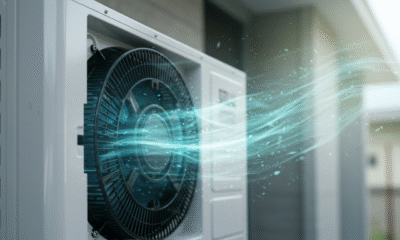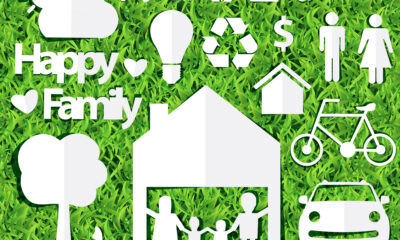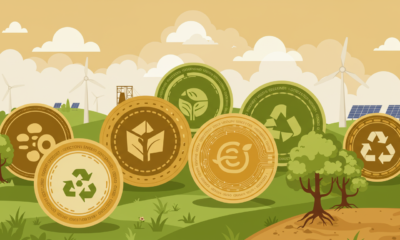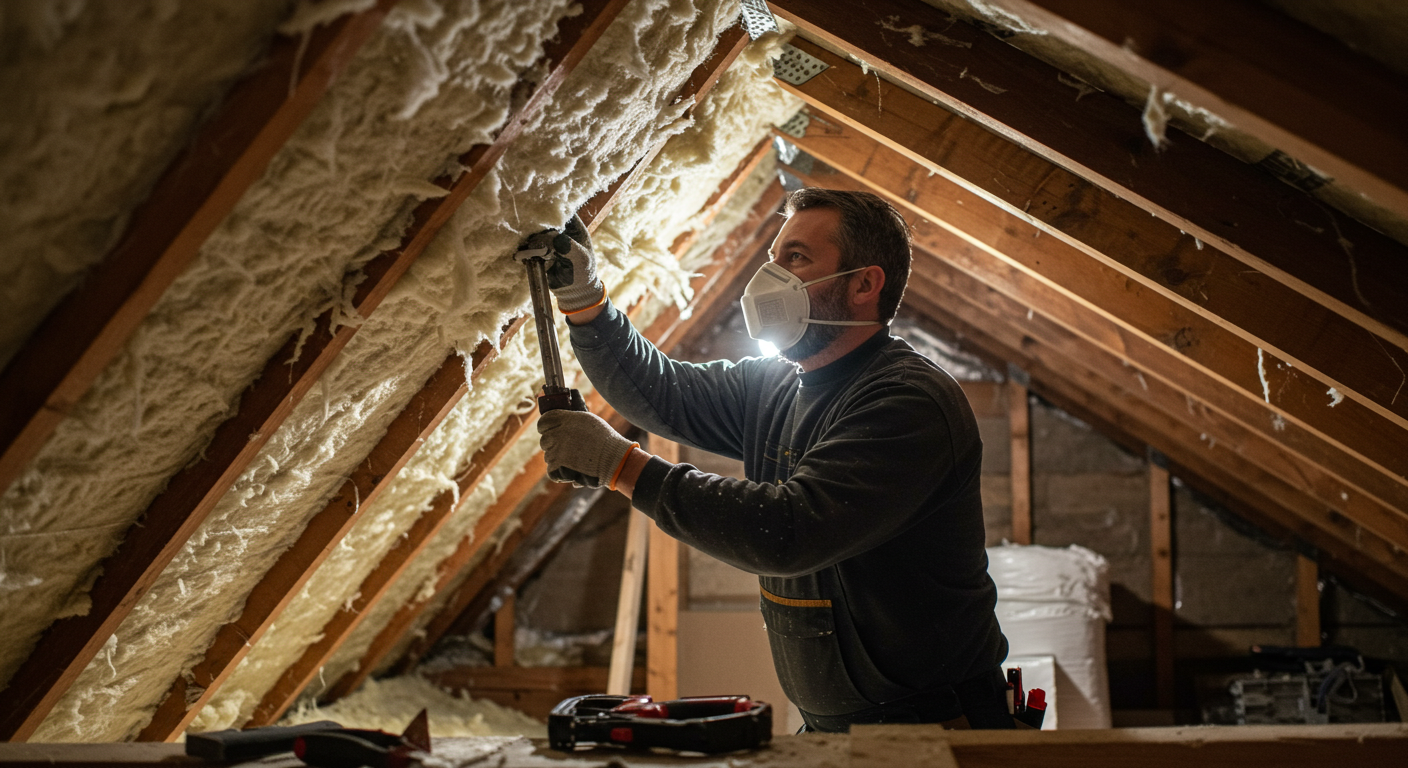
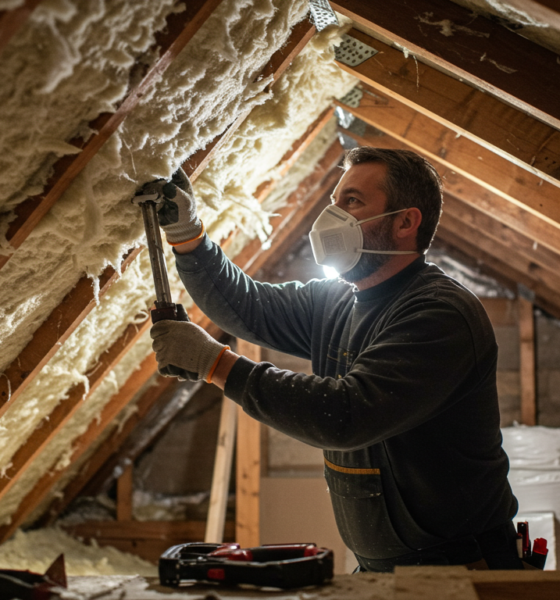
Energy
Insulation Upgrades: Eco-Friendly Ways to Lower Energy Bills
More than 75% are willing to go green, evidence of an emergent interest in sustainable living and energy efficiency. One article found that most are considering the adoption of greener solutions, as this is the time for saving money by lessening environmental impacts. Simple things such as insulation and appliances make all the difference both in sustainability and household expenses.
One effective way of enhancing sustainability and cutting costs involves proper insulation. Sealing and insulating the home can save up to 15% in heating and cooling costs by reducing the energy bills, according to the Energy Star program. It will not only make the home owners comfortable but also contribute to going green, ensuring a greener future.
This feedback is more important than ever, especially in a time when inflation is so high. We touched on this in one of our articles talking about how you can go green and be frugal at the same time.
Energy bills are soaring, and tenants are feeling the strain. At the same time, housing providers are under growing pressure to meet sustainability targets and reduce carbon emissions. The labour government has confirmed the 2030 target with all rental properties needing to meet a minimum EPC C, so housing providers don’t have long to act.
Insulation upgrades offer a straightforward solution. They keep homes warmer, cut energy waste, and bring down heating costs — benefiting both tenants and housing budgets.
Whether you manage social housing, plan large-scale retrofits, or simply want to improve living conditions, insulation is one of the smartest investments you can make. In this article, we’ll break down the benefits, the savings, and the practical steps to get started.
Why Insulation Matters More Than Ever
By reducing heat loss in winter and keeping homes cooler in summer, insulation plays a critical role in maintaining comfortable, energy-efficient homes.
Energy Costs Are Rising — Insulation Is the Solution
Energy bills have soared in recent years, leaving many tenants struggling to keep their homes warm during colder months. Homes with poor insulation lose heat quickly, forcing heating systems to work harder and consume more energy.
Inadequate insulation also contributes to fuel poverty, where tenants must choose between heating their homes and meeting other basic needs. For social housing providers and councils, addressing these issues is about safeguarding the well-being of residents.
The Environmental Imperative
Beyond financial savings, insulation upgrades are key to reducing carbon emissions. Heating inefficient homes requires more energy, much of which still comes from fossil fuels. By improving insulation, we not only reduce individual household emissions but also make meaningful progress toward national and local net-zero targets.
We spoke to Michael Zohouri, founder of Social Housing Retrofit firm Pyramid Eco, who emphasised, ‘Insulation upgrades are one of the most impactful yet often overlooked steps towards achieving energy efficiency in housing. The savings for tenants are immediate, and the long-term benefits for the environment are undeniable.’
The Key Types of Insulation
When it comes to insulation, there’s no one-size-fits-all solution. Different properties require tailored approaches to address their unique challenges and structural characteristics.
External Wall Insulation (EWI)
External wall insulation involves adding an insulating layer to the outside walls of a property. It’s particularly effective for older homes with solid walls that lack cavity insulation. EWI helps prevent heat loss, improves the external appearance of buildings, and reduces energy demand significantly.
Internal Wall Insulation (IWI)
Internal wall insulation involves fitting insulating materials to the inside of external walls. It’s a practical solution for properties where external wall insulation isn’t possible, such as listed buildings or homes in conservation areas. IWI can effectively reduce heat loss and improve thermal comfort without altering the building’s exterior. However, it may slightly reduce internal room size and requires careful planning to avoid condensation issues.
Loft Insulation
Up to 25% of a home’s heat can escape through an uninsulated roof. Loft insulation is one of the most cost-effective upgrades available, trapping heat inside during winter and keeping homes cooler in summer.
Cavity Wall Insulation
Many homes built after the 1920s have cavity walls — two layers of brick with a gap between them. Filling this cavity with insulation material significantly reduces heat loss without altering the building’s appearance.
Floor Insulation
Heat can also escape through uninsulated floors, especially in older properties with suspended timber floors. Adding insulation beneath floorboards helps improve overall energy efficiency and eliminates draughts.
Each type of insulation has its own advantages, and often, a combination of approaches is needed to achieve optimal results.
The Financial Impact of Insulation Upgrades
Insulation isn’t just an expense — it’s an investment with measurable returns.
Lower Energy Bills for Tenants
Proper insulation reduces heat loss, meaning heating systems don’t have to work as hard or as long to maintain a comfortable temperature. This directly translates into lower energy bills for tenants, reducing financial strain and improving overall quality of life.
Reduced Maintenance Costs
Insulated homes are less prone to damp, mould, and condensation — issues that often require expensive repairs. By tackling the root cause of these problems, landlords can reduce ongoing maintenance expenses and improve property longevity.
Increased Property Value
Energy-efficient homes are more desirable in the housing market. For landlords and housing providers, insulation upgrades can enhance the value of their property portfolios while aligning with government energy efficiency standards.
Practical Steps for Implementing Insulation Upgrades
Improving insulation across housing stock requires a clear, structured approach to ensure maximum impact and minimal disruption.
Conduct Comprehensive Energy Audits
Start with an energy audit to pinpoint where heat loss is occurring. Focus on walls, roofs, floors, and windows to identify priority areas. Audits provide data to guide upgrades and strengthen funding applications.
Develop a Long-Term Strategy
Create a phased plan to manage costs and reduce disruption. Address the most energy-inefficient properties first and schedule work during less disruptive seasons. A clear strategy keeps projects on track and manageable.
Explore Funding Opportunities
Look into government grants and green funding schemes like the Social Housing Decarbonisation Fund. Early research and strong applications can ease financial pressure and accelerate timelines.
Work with Qualified Professionals
Partner with certified installers to ensure high standards of safety and quality. Certifications like PAS 2035 and TrustMark guarantee compliance and long-term performance of insulation upgrades.
Educate Tenants
Inform tenants about simple energy-saving habits — like ventilating rooms, using extractor fans, and reducing indoor drying. Clear communication and easy-to-follow guides empower tenants to maintain energy-efficient homes.
Looking Ahead: Making Insulation a Priority
The case for insulation upgrades is clear. From lowering tenant energy bills to reducing carbon footprints, the benefits are both immediate and long-lasting. For housing providers, councils, and policymakers, insulation shouldn’t be viewed as an optional extra — it’s an essential part of modern housing strategy.


 Environment9 months ago
Environment9 months agoAre Polymer Banknotes: an Eco-Friendly Trend or a Groundswell?

 Environment11 months ago
Environment11 months agoEco-Friendly Home Improvements: Top 7 Upgrades for 2025

 Features8 months ago
Features8 months agoEco-Friendly Cryptocurrencies: Sustainable Investment Choices

 Features9 months ago
Features9 months agoEco-Friendly Crypto Traders Must Find the Right Exchange
